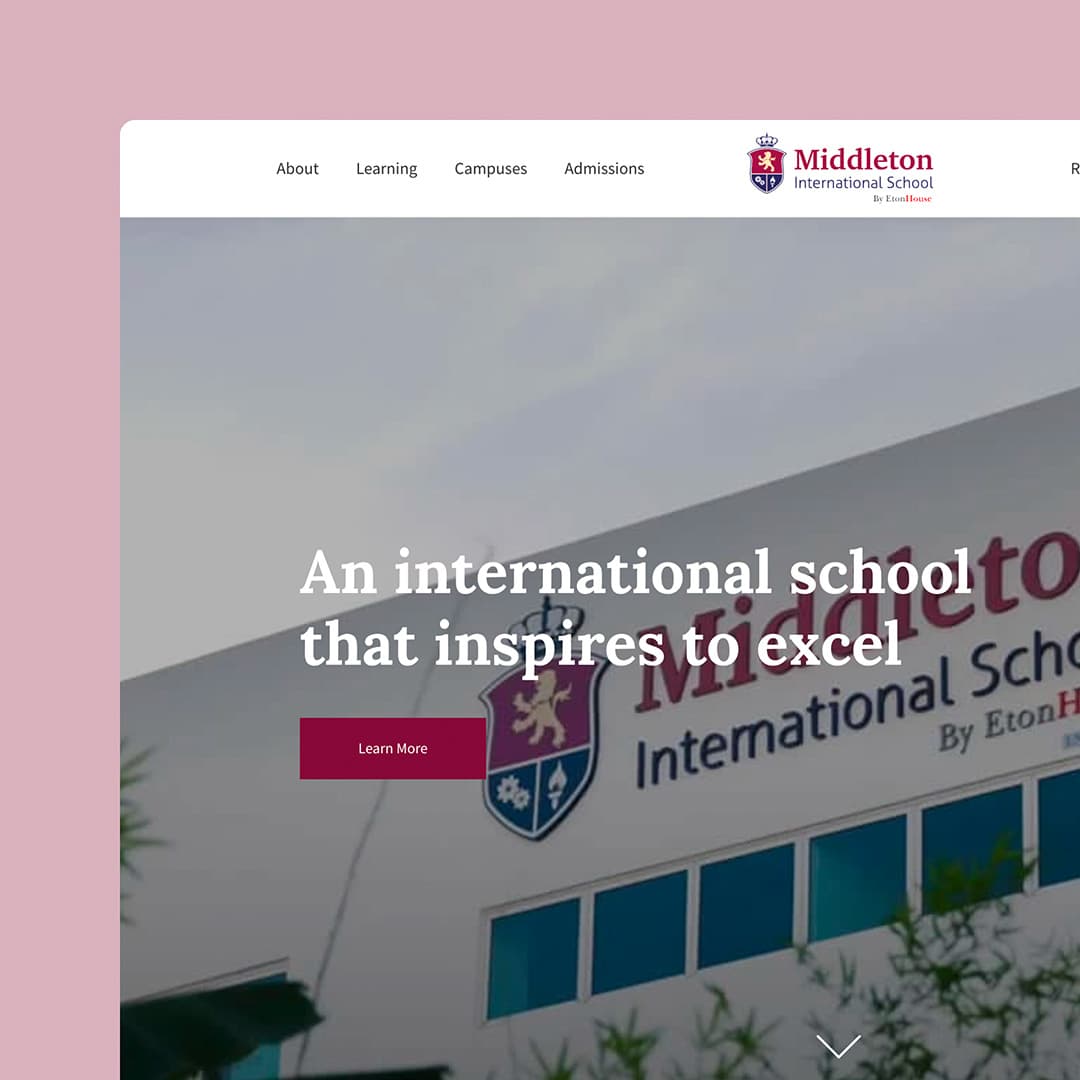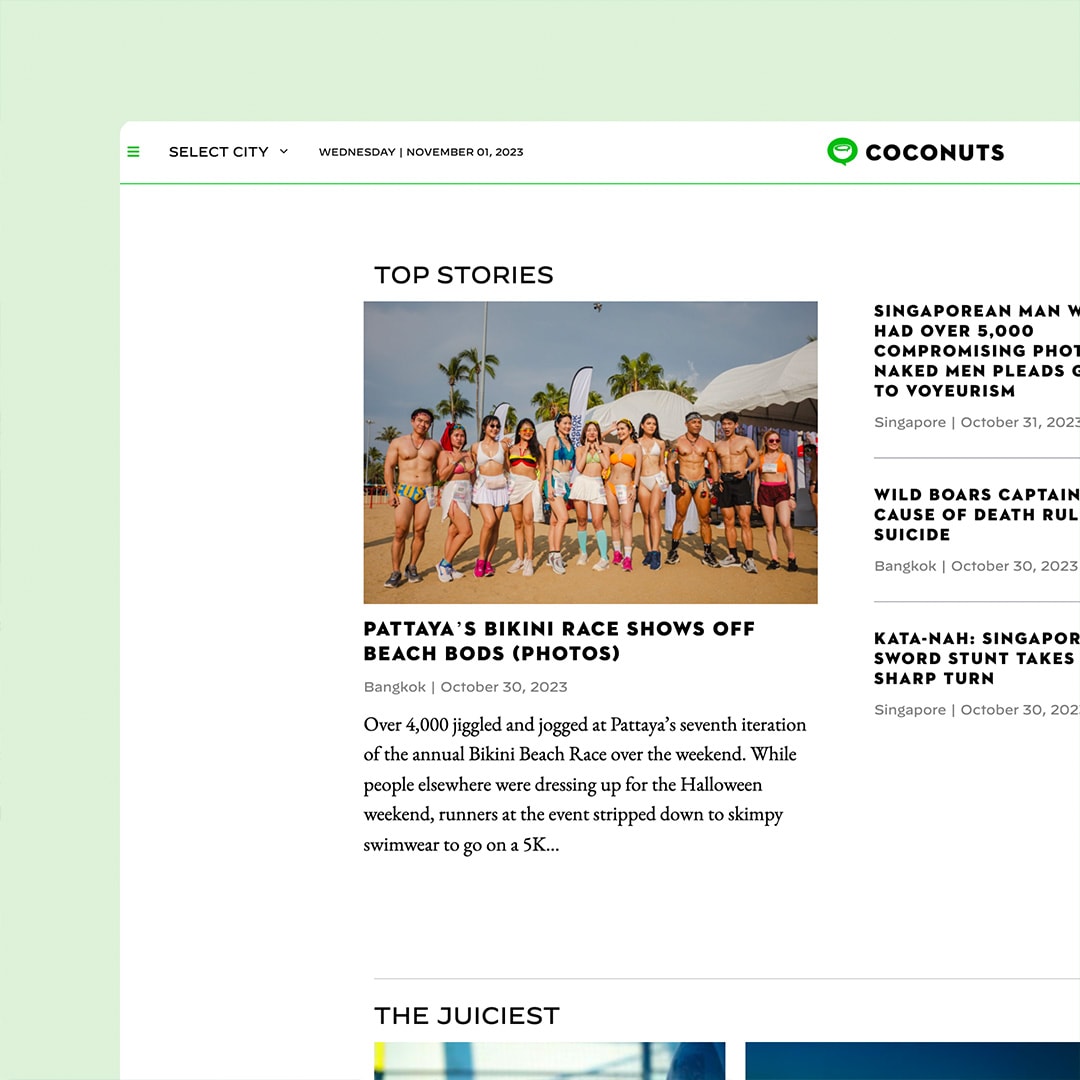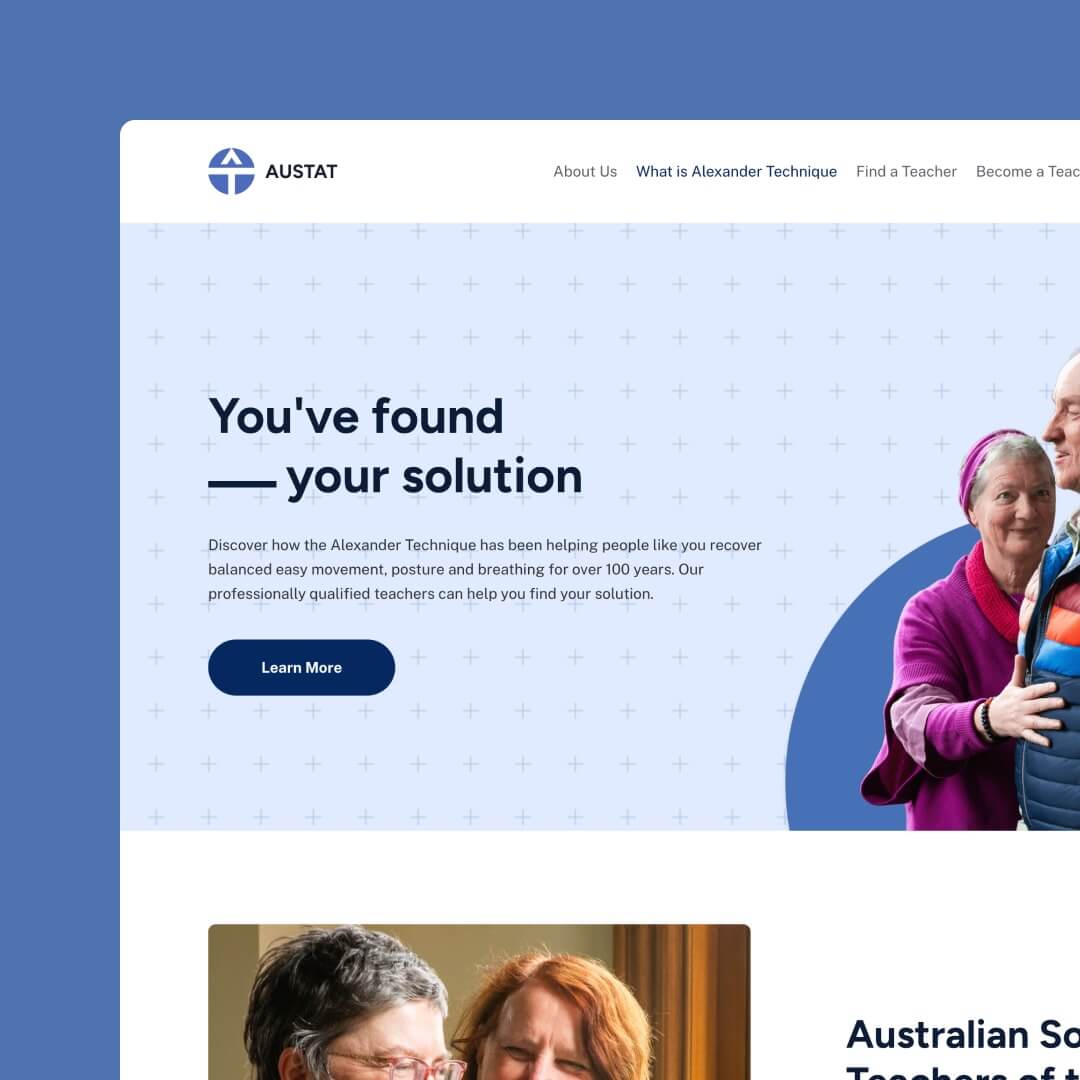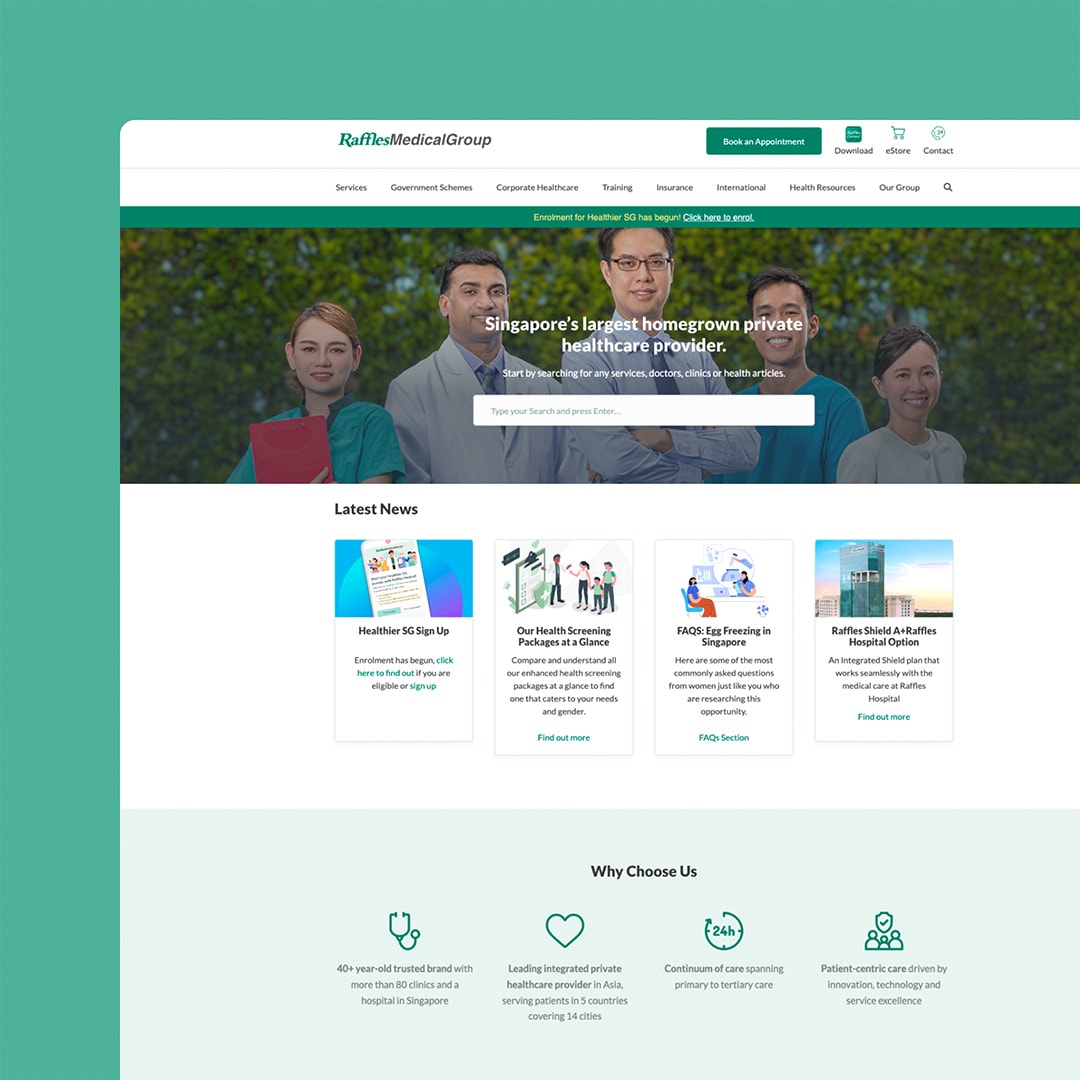
Clean and simple design is about creating a digital space that feels open, organised, and easy to navigate. It combines thoughtful spacing, strategic design choices, and careful attention to detail to create an online experience that doesn’t overwhelm visitors. A clean website design strategically removes unnecessary elements while maintaining visual hierarchy, allowing users to find information quickly and focus on what matters most.
Clean website design isn’t simply about minimalism, though they share similarities. It’s about purpose and clarity—using white space effectively, limiting colour palettes, and implementing consistent imagery to guide users through the content. These design principles help businesses create websites that accurately convey their brand image, whether that’s professional, luxurious, or approachable.
The benefits extend beyond aesthetics. Clean websites typically load faster, adapt better to mobile devices, and create positive first impressions that keep visitors engaged. When users aren’t distracted by cluttered layouts or confusing navigation, they’re more likely to stay longer and take desired actions.
Table of Contents
Introduction to Clean Design
Clean design refers to a website design approach that emphasises simplicity, clarity, and ease of use. It involves removing unnecessary elements, using ample white space, and creating a consistent layout to guide users through the website. A clean design is essential for creating a user-friendly interface that allows visitors to focus on the key elements of the website. By using a minimalistic layout and strategic use of design elements, clean design can help improve website speed, increase conversion rates, and enhance the overall user experience.
Key Takeaways
- Clean website design combines strategic spacing, limited colour palettes and consistent imagery to create intuitive user experiences.
- Removing unnecessary elements while maintaining a clear visual hierarchy helps visitors quickly find what they need.
- A clean design approach improves website performance, enhances brand image and increases visitor engagement.
Defining Clean Website Design
Clean website design focuses on simplicity, clarity, and functionality to create visually appealing and user-friendly websites with a clean layout. This approach minimises clutter while emphasising essential elements that support the user experience and brand communication.
Core Principles
Clean website design centres on simplicity through the reduction of unnecessary elements. Designers utilise white space strategically to create breathing room around content, making information easier to digest.
The layout follows a clear structure with strong visual hierarchy, guiding visitors naturally through the content. Typography choices are deliberate and limited to 2-3 complementary fonts that enhance readability.
Colour palettes remain restricted, often using 2-4 colours that align with the brand’s identity. Each design element serves a specific purpose rather than existing for decoration alone.
Consistency across all pages helps users navigate intuitively without constant reorientation. Load times remain quick due to optimised images and minimal scripts, which improves both user experience and search engine rankings.
Difference from Traditional Web Design
Traditional web design often embraces complexity with multiple elements competing for attention. These designs frequently feature dense information presentation, animated elements and elaborate navigation systems that can overwhelm visitors.
Clean design strips away these complications in favour of focused content delivery. Where traditional designs might use gradients, shadows and textured backgrounds, clean designs prefer flat colours and subtle transitions. This approach is particularly beneficial for a corporate website, as it facilitates easier management of products and content, reduces errors, and enhances user experience by allowing customers to navigate effortlessly through a clear and categorised interface.
Navigation in clean designs becomes straightforward with clearly labelled menus and intuitive pathways. Images serve specific purposes rather than filling space, and each is selected carefully to communicate brand values.
Content presentation follows a “less is more” philosophy, with concise copy that delivers information efficiently. This approach produces websites that load faster and adapt better to mobile devices than their traditional counterparts.
Impact on Brand Identity
Clean website design powerfully shapes how audiences perceive a brand. It communicates professionalism, attention to detail, and respect for user time through its efficient organisation and thoughtful simplicity. The visual impact of clean design, with its bold typography, high-quality imagery, and cohesive colour palette, makes a strong and lasting impression on visitors, making it easier for users to engage with the content and navigate the site.
Brands using clean design appear more trustworthy as the transparency in presentation suggests transparency in business practices. The focused nature of content helps emphasise key brand messages without distraction.
Modern brands particularly benefit from clean designs that showcase adaptability and contemporary thinking. The restrained aesthetic creates space for brand personality to shine through carefully selected images, colours, and typography.
Clean design allows for better brand recognition as distinctive elements stand out more clearly against simplified backgrounds. This recognition builds over time as users associate the streamlined experience with the brand, creating lasting positive impressions that extend beyond the digital environment.
Benefits of Clean Website Design
A clean website design offers numerous benefits, including improved user experience, increased conversion rates, and enhanced brand recognition. By removing unnecessary elements and using a simple layout, a clean design can help reduce distractions and guide users to the desired action. A clean website design can also improve website speed, as it requires fewer resources to load, making it ideal for mobile devices. Additionally, a clean design can help establish a strong brand identity and create a visually appealing interface that resonates with users.
Key Elements of Clean Website Design
Clean website design relies on several foundational elements that create visual harmony and improve user experience. These components work together to eliminate clutter and present content in a straightforward, accessible manner.
Strategic Use of White Space
White space (or negative space) refers to the empty areas between design elements on a web page. It plays a crucial role in clean design by giving content room to breathe. When used effectively, generous white space improves readability and helps guide users’ attention to important information.
Designers strategically implement white space around text blocks, images, and interactive elements. This spacing prevents visual overload and creates a sense of balance throughout the site. Research shows that proper use of white space can increase comprehension by up to 20%.
White space doesn’t necessarily need to be white – it simply refers to unmarked areas that create visual breaks. High-quality, clean designs use adequate margins and padding to separate content sections, making information easier to digest and creating a more pleasant browsing experience.
Minimalism in Visual Elements
Minimalism is a core principle of clean web design that focuses on removing unnecessary elements while preserving functionality. This approach emphasises quality over quantity through careful selection of visual components.
A limited colour palette (typically 2-3 primary colours with accent shades) creates visual consistency and reduces distraction. A cohesive colour scheme enhances aesthetic qualities and also facilitates navigation and readability, ultimately fostering engagement and a positive impression on users. Each colour should serve a specific purpose, such as highlighting calls to action or distinguishing between content sections.
Typography choices are equally important. Clean designs typically feature:
- No more than 2-3 font families
- Clear hierarchy through font sizes and weights
- High contrast between text and background
- Consistent styling throughout the site
Images and graphics must align with the overall aesthetic while serving a clear purpose. Decorative elements that don’t contribute to the user’s understanding or experience are eliminated.
Consistent Layout and Structure
A consistent layout forms the backbone of clean website design. It establishes visual patterns that users can quickly learn and anticipate, making navigation more intuitive. An intuitive interface enhances this by providing a well-structured layout with clear categories, enabling visitors to navigate easily and engage more with the content.
Clean designs employ grid-based layouts that align elements systematically across pages. This creates order and balance while making content easier to scan. The structure should remain consistent across different device sizes through responsive design principles.
Headers, footers, and navigation elements maintain the same position and styling throughout the site. This consistency builds user confidence and reduces cognitive load when moving between pages.
Content blocks follow logical groupings with clear visual separation between different sections. This structured approach helps users mentally organise information and find what they need without feeling overwhelmed.
Intuitive Navigation
Navigation is perhaps the most critical functional element of clean website design. It must provide clear pathways to all important content while remaining visually unobtrusive. Additionally, incorporating a clear call-to-action (CTA) within the navigation can significantly enhance user engagement and conversion rates.
The most effective clean websites feature navigation systems that are both visually minimal and highly functional. Navigation labels should be concise and descriptive, avoiding industry jargon or clever but unclear terminology.
Clean navigation often includes:
- A streamlined main menu with 5-7 primary options
- Clear visual indicators of the current location
- Consistent placement across all pages
- Mobile-friendly adaptations that preserve functionality
Secondary navigation patterns like breadcrumbs, related links, and search functionality complement the main menu without adding visual clutter. The goal is to help users find information with minimal effort while maintaining the clean aesthetic of the site.
Removing Unnecessary Elements
Clean website design hinges on the strategic elimination of elements that don’t serve a purpose. Removing visual clutter creates spaces where users can easily find what they need without distractions getting in the way.
Eliminating Clutter
Clutter represents any element on a website that doesn’t contribute to the user’s journey or the site’s objectives. This includes excessive decorative images, unnecessary animations, redundant buttons, and ornamental features that add no functional value. Web designers should focus on removing elements that do not serve a clear purpose, enhancing usability by eliminating distractions and facilitating easier navigation and information retrieval.
Many websites suffer from “feature creep” where additional elements are added over time without removing outdated ones. This accumulation results in crowded interfaces that slow down both loading times and decision-making.
Effective decluttering involves:
- Removing duplicate navigation options
- Limiting colour palette to 2-3 primary colours
- Reducing the number of fonts to 1-2 families
- Consolidating similar functions into single buttons
- Eliminating auto-playing media
Enhancing Focus and Clarity
When unnecessary elements are removed, the important content naturally gains prominence. This shift creates a visual hierarchy that guides users to critical information without them needing to consciously filter through noise.
White space (or negative space) plays a crucial role in clean design. Rather than viewing it as an empty area to fill, designers should see it as an active component that frames content and improves readability.
Clear typography choices support focus as well. Text should be easily readable with appropriate spacing between lines and paragraphs. Headings should stand out from body text through size, weight, or colour variation—not through elaborate decorative elements.
Fewer Distractions
Digital users are constantly bombarded with information competing for their attention. A clean website provides relief from this cognitive overload by reducing distractions to a minimum.
Elements like pop-up advertisements, excessive animations, and flashing banners pull attention away from core content. By eliminating these interruptions, websites help visitors maintain focus on their tasks, whether researching information or completing a purchase.
Navigation should be intuitive and predictable. Complex menu structures with numerous options confuse users and create unnecessary cognitive load. Simplified navigation with clear labels helps visitors find their way without frustration.
Social media widgets, while potentially useful, often create visual noise. Consider limiting these to pages where they serve a clear purpose rather than including them on every page by default.
Designing for an Engaging User Experience
Clean website design creates the foundation for exceptional user experiences. Effective design elements work together to guide visitors naturally through content while eliminating unnecessary distractions.
User-Friendly Interface
A user-friendly interface removes barriers between visitors and the information they seek. Clean designs use white space strategically to prevent overwhelming users with too much information at once. This breathing room helps visitors process content more easily and caters to changing user preferences.
Navigation menus should be simple and predictable, following established patterns that users already understand. Visitors shouldn’t need to think about how to use a website.
Text must be readable with proper contrast between fonts and backgrounds. Font sizes should be large enough for comfortable reading across different devices.
Consistent design elements throughout the site build familiarity and trust. When buttons, links and interactive elements look and behave the same way across pages, users learn the interface quickly.
Guiding Users to Desired Action
Clean design prioritises clear pathways to important destinations on a website. Strategic placement of call-to-action buttons makes desired actions obvious without seeming pushy. A limited colour palette and clean design draw attention to significant elements, minimising clutter and enhancing user experience.
Visual hierarchy helps direct attention to the most important elements first. This can be achieved through:
- Size differences (larger elements appear more important)
- Colour contrast (bright colours against neutral backgrounds)
- Positioning (important items placed in the natural reading flow)
- White space (isolated elements receive more attention)
Reduced clutter keeps attention focused on key conversion points. Each page should have a clear purpose and guide visitors toward completing specific goals.
Smart designers anticipate user needs by placing helpful information exactly where and when it’s needed in the user journey.
Facilitating Engaging Experiences
An engaging website balances aesthetic appeal with functional value. Clean design doesn’t mean boring—it means thoughtful restraint that highlights what matters, creating an engaging experience for users.
Loading speed significantly impacts engagement. Clean designs typically load faster because they use fewer resources. Each second of delay increases bounce rates dramatically.
Mobile responsiveness is non-negotiable. Clean designs adapt gracefully to different screen sizes without sacrificing usability or visual appeal.
Interactive elements should provide immediate feedback. When users click buttons or fill forms, the response should be instant and clear.
Accessibility features like proper heading structure and alt text for images help all users engage with content. These practices also support search engines in understanding and ranking the website appropriately.
Visual Appeal and Brand Recognition
Clean design significantly influences how visitors perceive a website and remember a brand. A visually cohesive presentation creates immediate trust and strengthens brand identity across all digital touchpoints.
Effective Use of Colour Scheme
Colour plays a crucial role in clean website design by setting the emotional tone while reinforcing brand identity. A well-chosen colour palette helps create visual harmony and guides users through the interface. Research shows that consistent colours increase brand recognition by up to 80%. Some of the best examples of successful design strategies illustrate how effective colour schemes can enhance user experience while meeting strategic business goals.
Limited colour palettes with 2-3 primary colours and 1-2 accent colours tend to work best for clean designs. These restrictions force designers to be more deliberate with colour application.
White space (negative space) between coloured elements allows the design to breathe and highlights important content. This balanced approach prevents visual overload and helps visitors focus on key messages without distraction.
Typography and Imagery
Typography choices directly impact readability and brand personality. Clean website design typically features no more than 2-3 font families—usually one for headings and another for body text.
Sans-serif fonts like Helvetica, Open Sans and Roboto remain popular choices for their simplicity and excellent screen readability. Font weight variations and size hierarchies help guide the eye through content naturally.
Images in clean design serve clear purposes rather than filling space. High-quality, relevant photography or illustrations strengthen messaging and create visual interest.
White space around text and images prevents cluttered layouts and improves comprehension. Studies show that properly spaced content can increase reading speed by up to 14% and comprehension by 20%.
Adding Personality
Clean design doesn’t mean boring or generic. Thoughtful personal touches help websites stand out while maintaining clarity and simplicity. Small animations, micro-interactions, or distinctive graphic elements can add personality without overwhelming users.
Brand voice should match visual elements, creating a cohesive experience. A playful company might use light animations and brighter colours, while professional services might emphasise structure and subdued tones.
Custom illustrations, unique photo treatments, or signature design motifs help create memorable visual identities. These elements become recognisable symbols associated with the brand.
The goal is to balance personality with usability. Distinctive design elements should enhance the user experience rather than distract from it. When done properly, these touches create both visual appeal and stronger brand recognition.
Mobile Responsiveness and Accessibility
Mobile responsiveness is a fundamental aspect of clean website design that directly impacts user experience and site performance. A properly optimised mobile site adapts to different screen sizes while maintaining functionality and visual appeal across all devices.
Optimising for Mobile Devices
Mobile optimisation requires thoughtful consideration of touch interfaces, loading speeds, and content hierarchy. Designers should prioritise touch-friendly elements with adequate spacing between clickable items to prevent accidental taps. A clean and simple design is both user-friendly and cost-effective, as it avoids unnecessary complexity and expenses in development and maintenance.
Buttons and interactive elements should be at least 44×44 pixels to accommodate finger taps comfortably. This size standard helps all users, but especially benefits those with motor control limitations.
Images need proper compression and responsive sizing to load quickly on mobile networks. A mobile-friendly site typically loads within 1-3 seconds; each additional second increases bounce rates by 12%.
Font sizes should be readable without zooming (minimum 16px for body text). Simplified navigation menus, often using hamburger icons, help maintain clean interfaces on smaller screens.
Layouts Across Different Screen Sizes
Responsive layouts use flexible grids and CSS media queries to reorganise content across different screen dimensions. This approach creates an intuitive layout that shifts from multi-column desktop views to single-column mobile arrangements.
Key techniques include:
- Fluid grids that use percentage-based widths rather than fixed pixels
- Flexible images that scale within their containing elements
- Media queries that apply different styling at specific breakpoints
Breakpoints commonly target standard device sizes: 320px (mobile), 768px (tablet), 1024px (desktop), and larger screens. Each breakpoint should trigger appropriate layout changes.
Content prioritisation becomes crucial on smaller screens. The most important information appears first in the visual hierarchy, with secondary content accessible through clean navigation patterns.
Performance and Website Speed
Website speed directly affects user experience and search engine rankings. Fast-loading websites keep visitors engaged and improve conversion rates, while slow sites often lead to high bounce rates and lost customers.
Reducing Load Times
Clean web design prioritises speed by eliminating unnecessary elements. Simplifying site structure and removing excessive content helps pages load faster, making a clean and minimal design a powerful tool in enhancing user experience and engagement. Too many large images, videos, or complex animations can dramatically slow down websites.
Code efficiency plays a vital role in website performance. Clean, well-organised code loads much faster than bloated, poorly-written alternatives. Web designers should minify CSS, JavaScript, and HTML to decrease file sizes.
HTTP requests impact loading times significantly. Each element on a page (images, scripts, stylesheets) requires a separate HTTP request. Reducing these requests through techniques like CSS sprites or combining files can make websites more responsive.
Browser caching helps return visitors experience faster loading times. By storing commonly used resources locally, websites don’t need to reload everything with each visit.
Optimising for Faster Loading
Image optimisation is essential for faster loading. Properly sized and compressed images can dramatically reduce page weight without sacrificing quality. Using appropriate file formats (JPEG for photos, PNG for graphics with transparency) also improves performance.
Modern websites should leverage lazy loading techniques. This approach delays loading off-screen images until users scroll to them, making initial page load much quicker.
Font optimisation affects both aesthetics and speed. Limiting font varieties and weights prevents excessive loading times. Using system fonts or properly implementing web fonts with limited character sets can help sites load faster.
Choosing the right web hosting provider is critical. Quality hosting with good server response times forms the foundation of a fast website. Content Delivery Networks (CDNs) distribute website content across multiple servers worldwide, serving users from locations closest to them.
Mobile optimisation is non-negotiable for fast websites. Responsive design with mobile-specific performance tweaks ensures sites load quickly on all devices, regardless of screen size or connection quality.
SEO Benefits of Clean Design
Clean website design offers significant advantages for search engine optimisation. A well-structured, clutter-free site directly impacts how search engines interpret and rank your content while improving how users interact with your pages.
Improved Search Results
Clean code forms the foundation of better search engine rankings. When websites feature streamlined HTML, CSS, and JavaScript, search engines can crawl and index pages more effectively. This technical efficiency reduces load times—a critical factor in search algorithm rankings. A cohesive design across the entire website ensures that these benefits are consistent, enhancing both aesthetic and functionality without needing a complete redesign.
Search engines prioritise websites that deliver fast user experiences. According to the search results, “clean code significantly contributes to faster loading times, leading to higher rankings.” This speed advantage translates directly to better visibility in search results.
A clean design typically features logical content hierarchy with proper heading structures. This organisation helps search engines understand page content and context more accurately, which can boost keyword relevance signals.
Sites with minimal code bloat also adapt better to mobile devices. Mobile-friendliness has become a key ranking factor as more users browse on smartphones and tablets.
Impact on Potential Customers
A clean website design dramatically improves user experience metrics that search engines monitor. Visitors spend more time exploring sites that are visually appealing and easy to navigate, reducing bounce rates that can harm rankings.
Clear visual hierarchies guide potential customers to important information quickly. This efficiency increases the likelihood that visitors will find what they need and take desired actions rather than returning to search results.
Search results note that “a cluttered and complicated design can be visually overwhelming” for users. In contrast, a clean structure creates positive first impressions that build trust with potential customers who discover your site through search.
Accessibility improves naturally with clean design. As one search result mentions, “Simple design is easier to make accessible,” which broadens your potential audience while satisfying search algorithms that increasingly value inclusive web experiences.
Clean Website Design for Business Goals
Clean website design directly impacts how companies achieve their business objectives. It strategically balances aesthetics with functionality to deliver tangible results.
Enhancing Brand Trust
Clean design builds credibility for businesses by creating positive first impressions. Research shows visitors form opinions about websites in just 50 milliseconds, with a user-friendly layout, organised layouts, and professional aesthetics strongly influencing trust perceptions.
White space around key elements draws attention to important information without overwhelming visitors. This clarity signals professionalism and attention to detail, qualities customers associate with reliable businesses.
Consistent visual elements—like typography, colour schemes, and image styles—reinforce brand identity across all pages. This visual coherence helps visitors remember the brand and builds recognition over time.
For corporate websites, clean design communicates stability and competence. Removing visual clutter and focusing on clear communication shows respect for visitors’ time and attention.
Driving Conversion Rates
Clean design significantly improves conversion rates by guiding visitors toward desired actions. Strategic placement of call-to-action buttons within uncluttered spaces makes them stand out and increases click-through rates.
Simplified navigation reduces cognitive load, allowing visitors to find what they need quickly. When users don’t feel frustrated or confused, they’re more likely to complete purchases, fill out forms, or take other conversion actions.
Page load speed, a key benefit of clean design, directly affects conversion. Studies show that even a one-second delay can reduce conversions by 7%. Minimalist designs with optimised images load faster, keeping potential customers engaged.
Mobile responsiveness, central to clean design principles, expands conversion opportunities. Clean layouts adapt smoothly to different screen sizes, maintaining usability across devices and capturing business from the growing segment of mobile shoppers.
Best Practices for Creating a Clean Website
To create a clean website, it’s essential to follow best practices such as using a consistent layout, ample white space, and a limited colour palette. A clean website design should also prioritise intuitive navigation, making it easy for users to find what they’re looking for. Removing unnecessary elements and using a simple website design can help improve website speed and reduce bounce rates. Furthermore, a clean design should be mobile-friendly, ensuring that the website loads quickly and is easily accessible on smaller screen sizes.
Examples of Clean Website Designs
There are many examples of clean website designs that demonstrate the effectiveness of this approach. Websites such as Apple, Uber, and Airbnb feature clean and simple designs that prioritise user experience and ease of use. These websites use ample white space, intuitive navigation, and a limited colour palette to create a visually appealing interface that guides users to the desired action. Other examples of clean website designs include websites that use a minimalistic layout, such as Squarespace and Mint Ventures, which demonstrate how clean design can be used to create a powerful and engaging online presence.
In summary, clean website design combines strategic use of white space, minimalistic visual elements, intuitive navigation, and consistent branding to create a user-friendly and visually appealing online experience that effectively communicates a business’s message while driving engagement and conversions.
For a clean website design that will take your business to the next level, contact the experts at Chillybin today.
Our expertise
Website Design
We mix creativity with UX thinking to design interfaces that feel seamless. Always responsive, always built around outcomes — leads, engagement, conversion.











